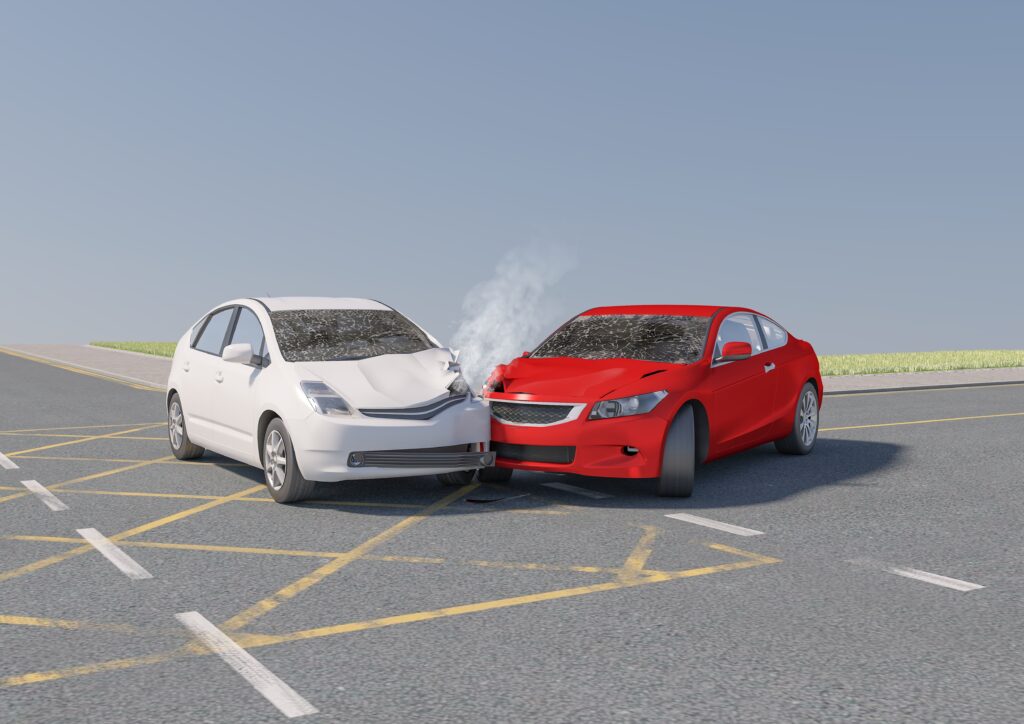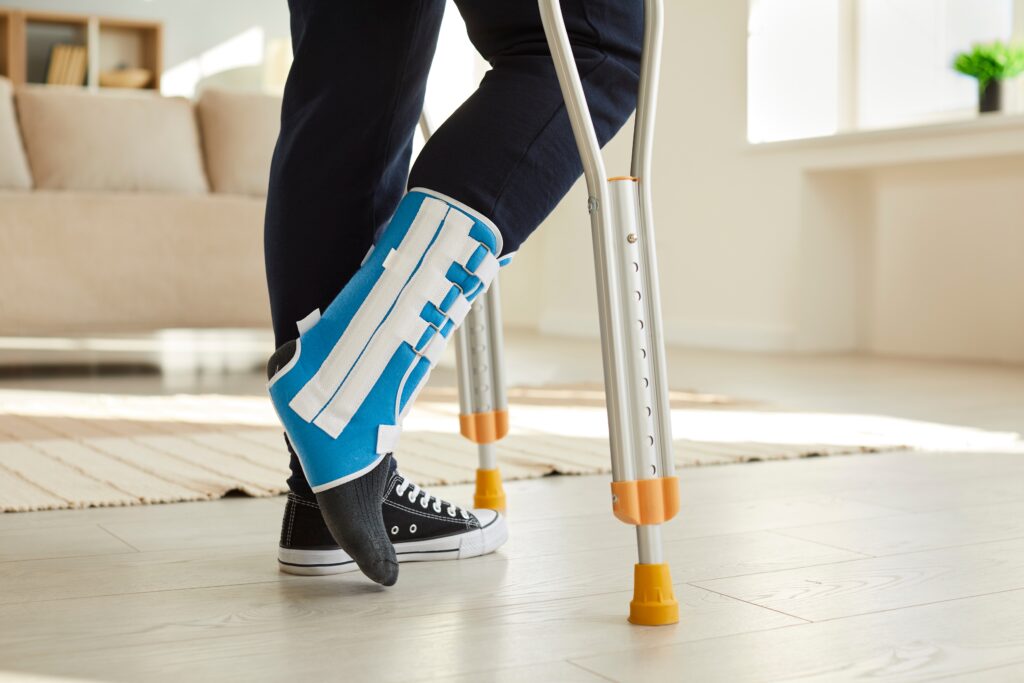In many car accident scenarios, it can be extremely difficult to determine exactly how the accident occurred and who was at fault. In these situations – especially where the insurance company is disputing fault – you need an experienced lawyer representing you throughout your case. Your lawyer can retain an accident reconstructionist or other expert who can determine fault for the accident. Your car accident lawyer in Edmonton can also handle every step of the claims-filing and litigation processes for you and pursue the justice and compensation you need to become whole again.
Common Causes of Car Crashes
Car accidents are a significant concern on the roads, often resulting from the negligence of other drivers.
- One of the primary causes of car accidents is distracted driving. This includes any activity that diverts attention from driving, such as texting, talking on the phone, eating, drinking, or adjusting the radio. When a driver’s focus is not on the road, their ability to react quickly to sudden changes diminishes, increasing the likelihood of an accident. Distracted driving can lead to various types of crashes, including rear-end collisions, where one vehicle crashes into the back of another.
- Speeding is another major factor contributing to car accidents. Many drivers exceed the posted speed limit or drive too fast for road or weather conditions, impairing their ability to stop in time or make safe turns. Speeding significantly increases both the likelihood of a crash and the severity of the resulting injuries. High-speed collisions can result in head-on crashes, where two vehicles collide while travelling in opposite directions, often leading to catastrophic injuries.
- Driving under the influence of drugs or alcohol is a severe form of negligence that impairs judgment and reaction times. Intoxicated drivers are more likely to engage in risky behaviours, such as speeding or failing to obey traffic signals. This type of negligence often leads to severe accidents, including side-impact collisions, where one vehicle strikes another from the side, commonly referred to as T-bone accidents.
- Reckless driving, including aggressive maneuvers like tailgating, weaving in and out of traffic, and road rage, is also a significant cause of traffic accidents. Such behaviour can lead to collisions at high speeds, increasing the risk of injuries or fatalities.
- Inexperienced drivers may also contribute to accidents due to their lack of skills and judgment. They may misjudge distances, fail to yield the right-of-way at the proper time, or struggle with vehicle control, leading to various types of crashes.
Determining Who is at Fault for a Car Crash

Determining fault in a car accident is essential for pursuing compensation and resolving disputes. The process involves analyzing evidence, understanding traffic laws, and sometimes utilizing expert opinions. Here’s a breakdown of how to establish fault and the types of evidence a car accident lawyer can use to support your case.
- Understanding Fault – In most cases, the driver who acted negligently or violated traffic laws is deemed at fault. Common examples of negligence include distracted driving, speeding, running red lights, and driving under the influence. Establishing fault requires a thorough examination of these factors.
- Evidence Collection at the Scene – Immediately after a car accident, gathering evidence is critical. Photographs of the vehicles involved, the scene, and road conditions can provide visual context for the accident. This documentation can highlight the positions of the cars and any damage sustained, helping to clarify exactly how the crash occurred.
- Witness Statements – Eyewitness accounts can be invaluable in determining fault. If bystanders observe the accident, collecting their contact information and statements can strengthen your case. Witnesses can provide unbiased perspectives on the events leading up to the crash, which can corroborate your account and challenge the other driver’s narrative.
- Police Reports – Law enforcement typically responds to car crashes and creates a police report detailing their observations and findings. This report may include information about citations issued, conditions at the scene, and initial assessments of fault. While a police report is not always conclusive, it carries weight in insurance claims and legal proceedings.
- Traffic Laws and Regulations – Understanding relevant traffic laws is important in establishing fault. For example, if a driver failed to yield the right-of-way or ran a stop sign, they may be found negligent. An experienced car accident lawyer can reference these laws to demonstrate how the other driver’s actions violated regulations and contributed to the accident.
- Video Evidence – Surveillance footage from nearby cameras or dashcam recordings can also be powerful evidence. Video footage can capture the moments leading up to the crash, providing clarity on each driver’s actions.
- Expert Testimony – In more complex accident cases, lawyers may engage expert witnesses, such as accident reconstruction specialists. These experts analyze evidence and provide professional opinions about how the accident occurred, helping to establish liability.
By leveraging these various types of evidence, an experienced car accident lawyer can build a compelling case that demonstrates the other driver’s fault and facilitates the pursuit of fair compensation for your damages and injuries.
Typical Injuries in Car Accidents
Car crashes can result in a wide range of physical and mental injuries, significantly affecting victims’ lives. Some of the most common injuries that car accident victims may suffer include:
Physical Injuries

- Whiplash – Whiplash is one of the most common injuries in car accidents, resulting from the sudden jerking of the head and neck during a collision. Symptoms frequently include neck pain, stiffness, and headaches. Treatment typically involves rest, physical therapy, and in some cases, pain management with medication.
- Fractures – Fractures, or broken bones, often occur in severe accidents. Commonly affected areas include the ribs, legs, arms, and pelvis. Treatment for fractures may require immobilization with casts or splints and, in some cases, surgical intervention to realign the bones.
- Concussions and Other Traumatic Brain Injuries (TBIs) – Concussions are brain injuries that result from a strong impact on the head or sudden movement. Symptoms can range from headaches and dizziness to confusion and memory issues. More severe TBIs can lead to long-term cognitive impairments. Treatment often involves rest, cognitive therapy, and close monitoring.
- Soft Tissue Injuries – These injuries include contusions, strains, and sprains that affect various ligaments, tendons, and muscles. Symptoms can manifest as swelling, pain, and limited mobility. Treatment typically consists of rest, ice, compression, elevation (RICE), and physical therapy.
- Back Injuries – Back injuries, such as herniated discs or spinal cord injuries, can occur due to the force of impact in a car crash. These injuries may lead to chronic pain, mobility issues, or even paralysis. Treatment often includes physical therapy, pain management, and sometimes surgery.
Mental Injuries
- Post-Traumatic Stress Disorder (PTSD) – Many accident survivors experience PTSD, including flashbacks, anxiety, and emotional distress. Therapy, including cognitive behavioural therapy (CBT) and exposure therapy, can help manage symptoms.
- Anxiety and Depression – The trauma of a car crash can lead to increased anxiety or depression. Symptoms may include persistent sadness, withdrawal from social activities, and difficulty concentrating. Treatment often involves therapy and medication.
- Adjustment Disorders – Victims may also struggle to adjust to the aftermath of a car accident, experiencing emotional or behavioural symptoms. Therapy can assist individuals in coping with their feelings and adapting to changes in their lives.
How Much is a Car Accident Case Worth?
Determining the worth of a car accident claim or lawsuit involves several factors and can vary significantly based on the circumstances of each case.
Potential Losses

- Lost income – One significant area of compensation involves lost earnings due to an inability to work after a car accident. If an injured party cannot perform their job duties because of their injuries, they may seek compensation for the income they lost while recovering. Additionally, if the injuries result in a long-term disability that affects future earning potential, compensation for this loss may also be included.
- Pain and Suffering – Pain and suffering compensation addresses the physical and emotional distress resulting from the car accident. This includes the actual pain experienced, as well as the psychological effects, such as anxiety and depression stemming from the incident. Courts often assess pain and suffering by considering the severity and duration of the injuries, as well as the overall effect on the victim’s quality of life.
- Emotional Distress – In addition to physical pain, victims may also claim compensation for emotional distress. This can encompass a range of feelings, such as fear, anger, or frustration resulting from the accident and its aftermath. Emotional distress claims may be supported by therapy records or statements from mental health professionals.
- Loss of Consortium – Loss of consortium refers to the effect of an injury on the victim’s relationships with family members or spouses. If a car accident results in significant changes in the injured party’s ability to participate in family life, a claim for loss of consortium may be filed. This compensation acknowledges the loss of companionship, affection, and support.
- Punitive Damages – In cases where the other driver’s conduct was particularly reckless or egregious, punitive damages may be awarded. These damages are necessary to punish the at-fault driver and deter similar behaviour in the future.
What Happens During Car Accident Litigation?
Litigation in a car accident case becomes necessary when parties cannot reach a settlement through negotiations or when the case involves significant injuries, complex liability issues, or disputes regarding the extent of damages. Here’s a closer look at when litigation is needed, what occurs during the process, and how a car accident lawyer can assist you.
When is Litigation Necessary?
Litigation is often pursued in car accident cases where:
- Injuries are Severe – If the car accident has resulted in serious injuries requiring extensive medical treatment or long-term care, litigation may be necessary to ensure fair compensation.
- Disputed Liability – When the parties involved disagree on who is at fault, legal action can clarify liability through evidence and legal arguments.
- Unacceptable Settlement Offers – If an insurance company provides a settlement offer that does not adequately cover your lost income, pain, and suffering, litigation may be required to pursue a fair resolution.
What Happens During the Litigation Process?
- Filing a Complaint – The litigation process begins with the injured party (the plaintiff) filing a complaint in civil court, detailing the facts of the case, the basis for liability, and the damages sought.
- Discovery Phase – Following the complaint, both parties engage in discovery, where they exchange evidence, documents, and witness information. This phase can involve depositions, interrogatories, and requests for documents. The goal is to gather as much information as possible to support each side’s claims.
- Pre-Trial Motions – Before a trial occurs, lawyers may file motions to resolve certain issues, such as excluding certain evidence. This stage helps clarify what will be presented during the trial.
- Trial – If the case proceeds to trial, both sides present their arguments, evidence, and witnesses – usually before a jury. The jury then deliberates and renders a verdict regarding liability and damages. A damage verdict determines how much compensation the accident victim will receive for their losses.
How Can a Car Accident Lawyer Help Throughout the Process?
A car accident lawyer can navigate the litigation process on your behalf by:

- Building a Strong Case – They will gather and analyze evidence, identify witnesses, and prepare legal documents to support your claim.
- Representing You in Court – Your lawyer will present your case in court, articulating the facts and legal arguments effectively to maximize your chances of success.
- Negotiating Settlements – Even during litigation, lawyers often negotiate with opposing parties to reach a settlement, potentially avoiding a lengthy trial.
Litigation may be necessary in certain car accident cases, and having a skilled lawyer to guide you through the process can significantly improve your chances of achieving a favourable outcome.
Talk with an Experienced Car Accident Lawyer Right Away
If you recently suffered injuries in a car accident where liability is being disputed, it’s essential that you contact a skilled personal injury lawyer in Edmonton right away. Your lawyer can retain the necessary expert(s) to establish fault in your case and will aggressively pursue the compensation you deserve during settlement negotiations or litigation. The sooner you have an attorney on your side, the better chance you have of obtaining a favorable outcome.
